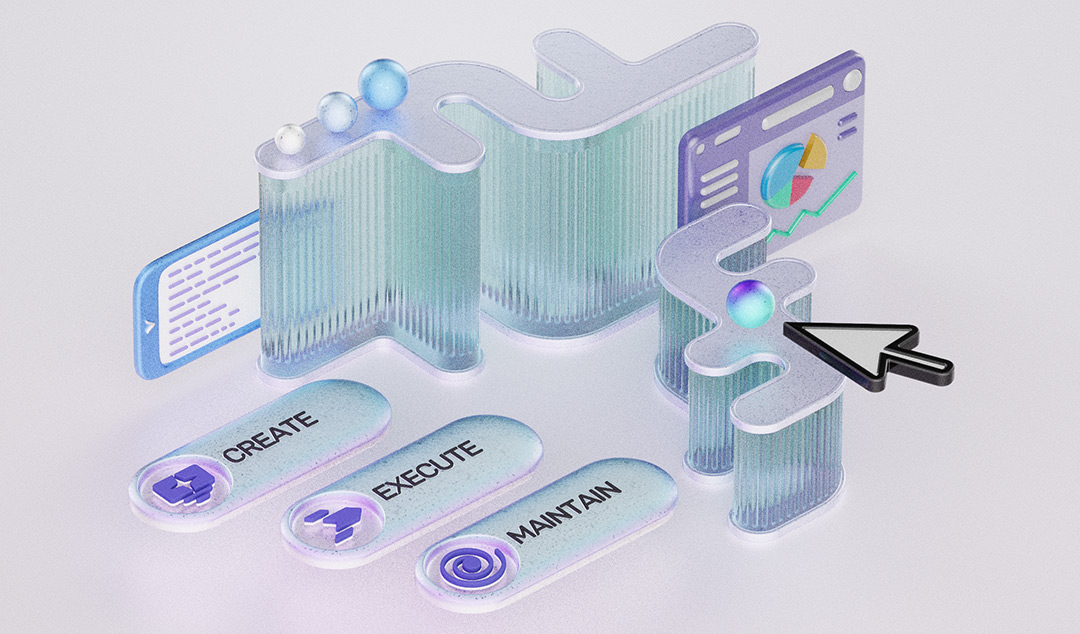Luddites, saboteurs, and the real reason people distrust disruptive technology
Luddites tried to derail the industrial revolution because they distrusted technology. Here, we see how this distrust can derail your digital transformation.

Luddites tried to derail the industrial revolution because they distrusted technology. Here, we see how this distrust can derail your digital transformation.
Ever since the dawn of the industrial revolution, skilled workers have seen disruptive technology as a threat to their jobs and way of life. Here, we look at why this distrust can derail your digital transformation.
The rise of the Luddites
England, 1779. The industrial revolution is in its infancy. Textile mills are turning to automation and the wonders of modern looms to increase production ten-fold. Ned Ludd, a skilled weaver, decides this automation is a threat to his livelihood and craft. He takes extreme action and destroys two mechanical knitting machines known as stocking frames. Fast forward 30 years and his name has been appropriated by the Luddites, a secretive brotherhood of textile workers who believe mill owners are trying to destroy their craft and their working practices.
Meanwhile, across the Channel, French workers have started sabotaging factory machinery. They have inventive ways to do this, including throwing their sabots, or wooden clogs, into the delicate machinery. The modern concept of sabotage dates from this time and refers to the French word “saboter”, meaning to deliberately bodge, bungle or break something. The Luddites soon followed suit and started taking extreme action to damage and destroy factory machinery. Sadly, this deliberate wrecking of new machines is an all-too-human reaction to things that appear to be a threat.
The truth of human reactions
We humans like to believe we are rational, intelligent beings. However, as soon as we are subjected to any perceived threat, it triggers our fight-or-flight response. This purely animalistic instinct made sense in the days when we were faced with real threats to us and our families. When faced with a wild animal that is about to attack, your options are to run away or turn and fight. In preparation for this, your adrenal gland will dump large amounts of the hormone epinephrine (adrenaline) into your bloodstream. You will get an immediate rush of energy and will temporarily be capable of apparently superhuman feats of exertion.
This instinct didn’t disappear as we became civilized. Just look at how you react if you have a near miss in your car! You immediately tense up and “see red”. A few minutes later you may be feeling weak and trembling as the epinephrine leaves your system. Unfortunately, this instinct can be triggered by all sorts of threats, real and imagined. This fight or flight instinct also feeds off other things. These include fear of the unknown, fear for one’s livelihood, and fear of new technology.

Why this matters for your digital transformation
Digital transformations are all about adopting new technology to overhaul how you work. The aim is to use the latest disruptive technology to improve efficiency, cut costs, and drive revenues. However, as many CEOs know to their cost, digital transformation is seldom a smooth journey. So, why is this, and what can you do to deal with it.
One reason is that digital transformation projects have a history of over-promising and under-delivering. This makes everyone in your organization slightly dubious about the merits of any new project. You can solve this one by being realistic about what the transformation will achieve. Don’t try to oversell it to your team and be realistic that it will involve some disruption to their way of working.
Another very real reason is fear of the unknown. Your team has probably learned and adapted to their current way of working. They are familiar with the oddities of the current tools. They understand what gotchas they need to watch out for. Test automation is a great example here. Your test engineers are perfectly well aware the Selenium isn’t perfect. You won’t find many people claiming they love it. However, over the years they have learned to cope with its vagaries and problems. They have adjusted their way of working and now feel comfortable with Selenium. As soon as you suggest replacing it, they are facing a real fear that the new tool just won’t actually solve their problems, or will cause a new set of problems they have to solve.
The added fear that AI brings
As soon as you start looking to introduce an AI-based solution you add a whole new layer of issues. For starters, AI has always been viewed with real suspicion. SciFi has always painted a dystopian picture of AI, from HAL in 2001 a Space Odyssey to Skynet in Terminator. More recently, there have been plenty of examples in the media where AI has made bad decisions or has displayed real bias. Just look at the headlines when Amazon’s facial recognition technology wrongly matched 28 members of Congress with police mugshots.
Then there’s the issue of “AI will take my job”. This is a very real fear that mirrors the fears of the original Luddites and saboteurs. There is no doubt that automation is a threat to many jobs. For instance, some reports reckon 95% of long-distance truck drivers will lose their jobs in the next decade once self-driving trucks become mainstream. However, roll back the clock a decade and test automation itself was seen as a threat to manual testers. But here we are in 2021, and manual testing is still just as vital as it ever was. The difference is, test automation allows all the routine regression testing to be completed faster and more effectively.
How you can deal with these fears
So, now you understand why your team fears AI-based transformation initiatives. But what can you actually do to confront these fears? Here’s our simple five-point plan.
- Acknowledge the fears and confront them head on. Explain that you know people are worried about their jobs, don’t trust AI to work right, and are afraid of how this will affect their routine. Show them that you aren’t going into this blindly and that you do care about them and how it will affect their work.
- Learn from history and share these lessons with your staff. Throughout history, every time a new technology has emerged, people have been afraid for their jobs. But in reality, every disruptive technology has seen a net increase in jobs. Economic conditions and the boom-bust cycle have a far greater short-term impact than technology.
- Look out for people who are trying to rationalize their fears. All too often we see cases where people come up with a rational but false reason why the digital transformation won’t work. Typically, this takes the form “We always need to be able to do X. The new tool won’t do this as well, so we should reject it.”
- Don’t over-promise, you’re just setting yourself up to fail. Be realistic with your whole team. Digital transformations take time, they don’t always go smoothly, and they will require everyone to adjust their way of working. But if they just stick at it, the results will be worth it.
- Above all else, make sure your digital transformation can’t be derailed by one or two modern-day Luddites. If you see someone trying to derail things, try to speak to them on a personal level. If you get to the bottom of their fears, then you can try to convert them to a believer. In many ways, you need to proselytize your transformation but without overselling its benefits.
Here at Functionize, we are all too aware of how these fears can derail digital transformations. We know our test automation platform outperforms Selenium on almost any rational metric. Yet we still see some hardcore test engineers resisting change when it comes to a more modern approach to test automation with AI/ML. Our answer is simple: intelligent test automation is here to stay. If you try digging your heels, you are simply delaying the inevitable. Meanwhile, your test team is suffering from the test automation paradox: the more tests they try to automate with Selenium, the more time they need to spend on maintaining tests, and the less time they have to automate more tests.











